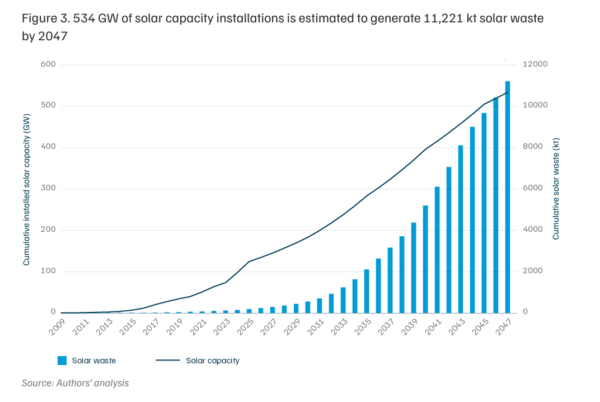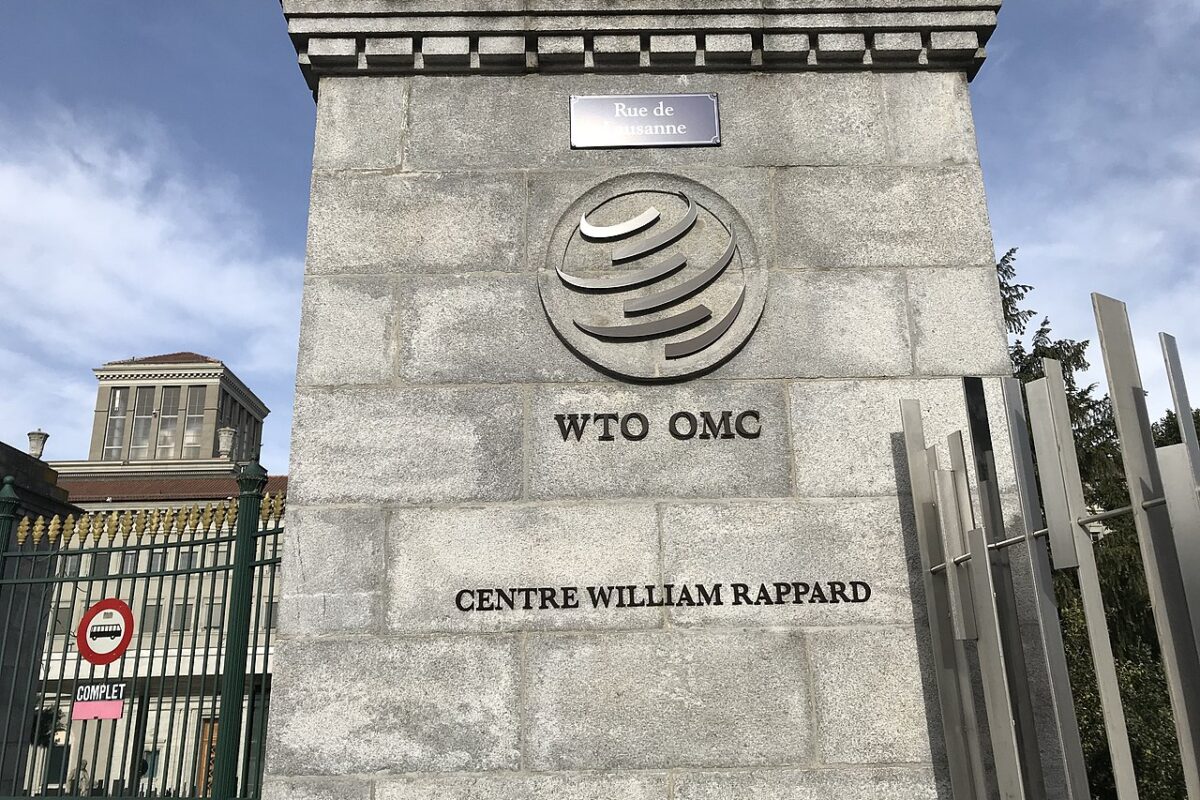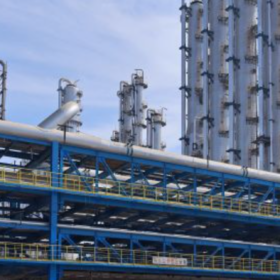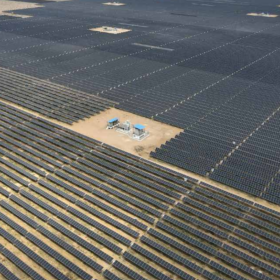Recovering and selling materials from discarded solar panels could be around INR 3,700 crore worth market opportunity in 2047, according to new studies by the Council on Energy, Environment and Water (CEEW). The highest share comes from silver—INR 1,861 crore or 50% of the total.
The studies also highlight that, if this potential is realised, recovering valuable materials such as silicon, copper, aluminium, and silver from solar waste could meet 38% of the sector’s manufacturing inputs by 2047 and avoid 37 million tonnes of carbon emissions by replacing virgin resources with recycled ones. India’s solar module recycling market is currently at a very nascent stage, with only a few commercial recyclers operating.

The twin CEEW studies provide India’s first comprehensive blueprint for building a domestic solar recycling ecosystem that supports both clean energy and manufacturing self-reliance. By 2047, India’s installed solar capacity could generate over 11 million tonnes of solar waste, with about 92% from crystalline-silicon modules. Managing this waste would require about 300 recycling facilities by 2047, with individual processing capacity of 3,600 tonnes per annum. The capital investment required is estimated to be INR 4,274 crore for setting up these facilities, the studies estimate.

Rishabh Jain, Fellow, CEEW, said, “India’s solar revolution can power a new green industrial opportunity. By embedding circularity into our clean energy systems, we can recover critical minerals, strengthen supply chains, and create green jobs—while turning potential waste into lasting value. Building this circular economy is most important for India’s resilient and responsible growth.”
The CEEW study also highlights that solar recycling in a formal setup remains unviable today, with recyclers facing losses of INR 10,000–12,000 per tonne. The biggest operational expense is buying back waste modules, which accounts for nearly two-thirds of the total (around INR 600 per panel), followed by processing, collection, and disposal costs. For recycling to become profitable, modules would need to be priced below INR 330, or recyclers supported through EPR certificate trading, tax incentives, and R&D investments in efficient recovery of silicon and silver.
Akanksha Tyagi, Programme Lead, CEEW, added, “Solar recycling can be the bridge between India’s clean energy and manufacturing ambitions. Beyond managing waste, it’s an opportunity to innovate—by designing panels for easier recovery, improving material purity, and creating new value chains around critical minerals. Introducing EPR targets, creating demand for circular products, improving data transparency, and designing for recyclability could turn India’s solar waste challenge into a green industry opportunity.”
To enable large-scale adoption, the CEEW studies recommend EPR targets for collection and recovery under the E-Waste (Management) Rules, 2022, led by the Ministry of Environment, Forest and Climate Change, and a Circular Solar Taskforce under the Ministry of New and Renewable Energy to align policy, finance, and industry action. They also propose a centralised solar inventory to identify waste hotspots, and urge producers to share material data and design modules for easy disassembly. Together, these steps would build robust collection systems, spur R&D in material recovery, and embed circularity into India’s renewable energy missions—keeping the clean energy transition resource-resilient and self-sustaining.
This content is protected by copyright and may not be reused. If you want to cooperate with us and would like to reuse some of our content, please contact: editors@pv-magazine.com.









By submitting this form you agree to pv magazine using your data for the purposes of publishing your comment.
Your personal data will only be disclosed or otherwise transmitted to third parties for the purposes of spam filtering or if this is necessary for technical maintenance of the website. Any other transfer to third parties will not take place unless this is justified on the basis of applicable data protection regulations or if pv magazine is legally obliged to do so.
You may revoke this consent at any time with effect for the future, in which case your personal data will be deleted immediately. Otherwise, your data will be deleted if pv magazine has processed your request or the purpose of data storage is fulfilled.
Further information on data privacy can be found in our Data Protection Policy.